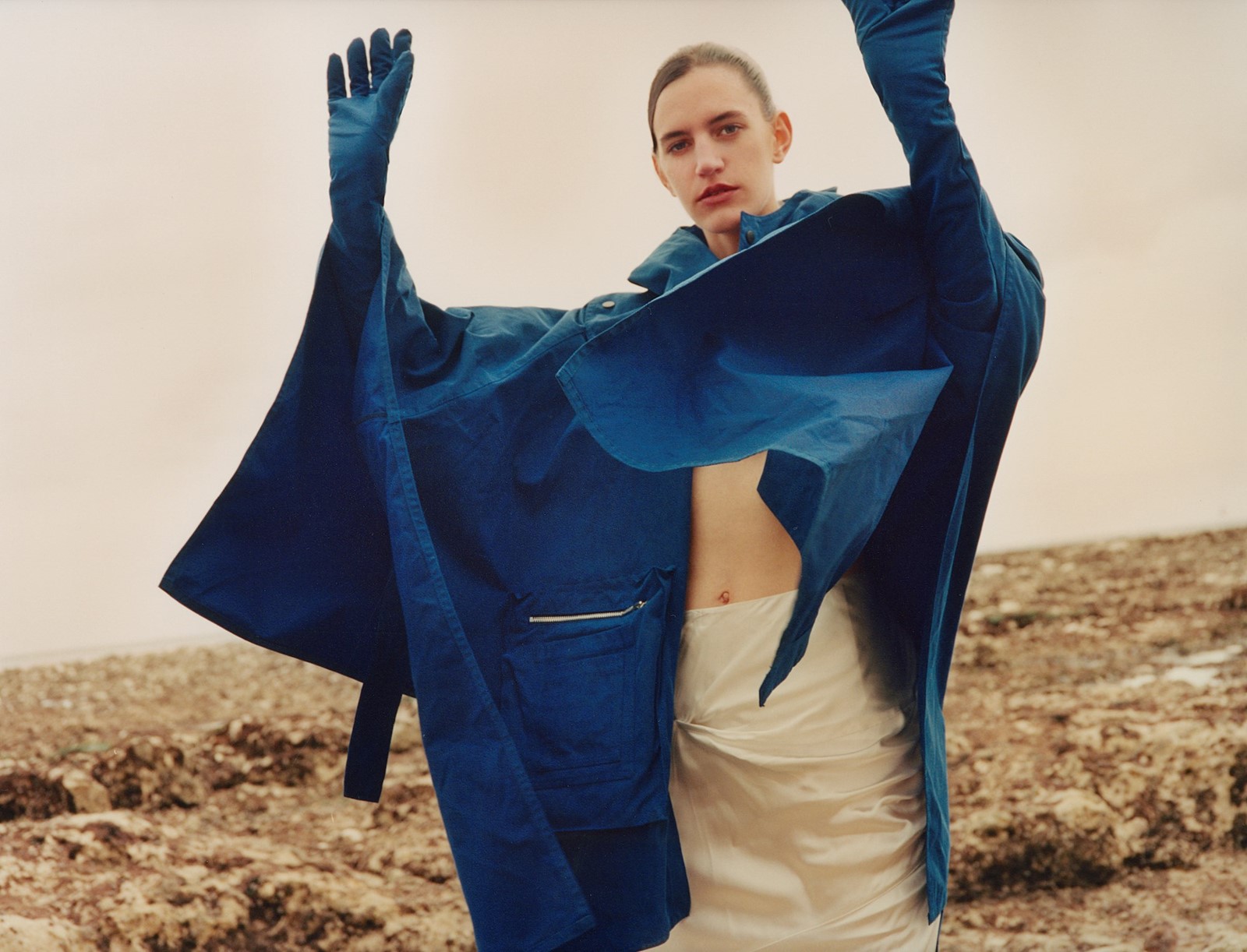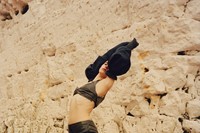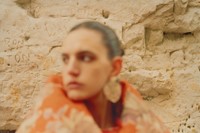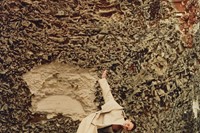German-born designer Johannes Boehl Cranau’s studio is in the basement of a converted warehouse close to London’s Dalston Junction station. In an unseasonably hot summer – temperatures tipping over 30 degrees – the subterranean space, and its subsequent shortage of windows, has one advantage, Boehl Cronau says: it is cool. Besides, for now it’s temporary – the designer will be moving to Paris later in the year, the French capital becoming permanent home to his young, almost-eponymous label ioannes.
Boehl Cronau graduated Central Saint Martins almost a year ago; since, he has been invited to show his work at Paris’ eminent contemporary art museum, Palais de Tokyo, on two occasions, for one of which he not only put on a fashion show, but invited the public to see the process behind it. “Hair, make-up, fittings, lookbook shoot… the pre, the after, everything into a public space,” Boehl Cronau says. It was testament to a growing interest around the fledging brand, but the production of such a spectacle proved a little overwhelming. For his next collection, shown in September, the project will be considerably smaller – Boehl Cronau will host an intimate presentation, also in Paris. “I want a bit of a calmer start to the season.”
The city, where the designer studied an art history foundation course before beginning at Saint Martins, has long felt like home. “For me, it was very clear early on that I wanted to be a Paris-based brand,” he says. “There’s a lot happening in Paris right now; it’s opening up a lot. The London scene is very much focused on the individual, the graduate, the new, whereas Paris is very much about heritage; it’s about meeting people, making connections.” That said, he will continue to return often to London, where he has already built up a tight-knit web of collaborators and friends. “It’s nice to have that dialogue between the cities.”
In the clothes themselves, defined by a certain generosity of cloth, he finds an affinity with the excessive spirit of Parisian couture – his most recent collection included amply sized brocade puffa jackets wrapped elegantly around the body like giant scarves and long opera gloves, deemed “puff-sleeved”, which evoked 1980s abundance. Fabric itself remains at the crux of his process – an obsession since childhood, first learnt from a dressing up box which contained discarded pieces of his mother and grandmother’s clothing.
“Fashion always had an aspect of play, of dressing up,” he says, of an early realisation of the creative potential of clothing. “I loved the idea that a blanket could become – I don't know – a tent, a cave, a gown, a king’s robe. It’s this aspect of fantasy that material can have – I think that’s my continuous story with the medium of cloth.” In these terms, Boehl Cronau deems himself a modern dressmaker, fascinated with what he calls the “gestures” of clothing. He seems to continually ask himself the question: what happens when fabric meets the body?
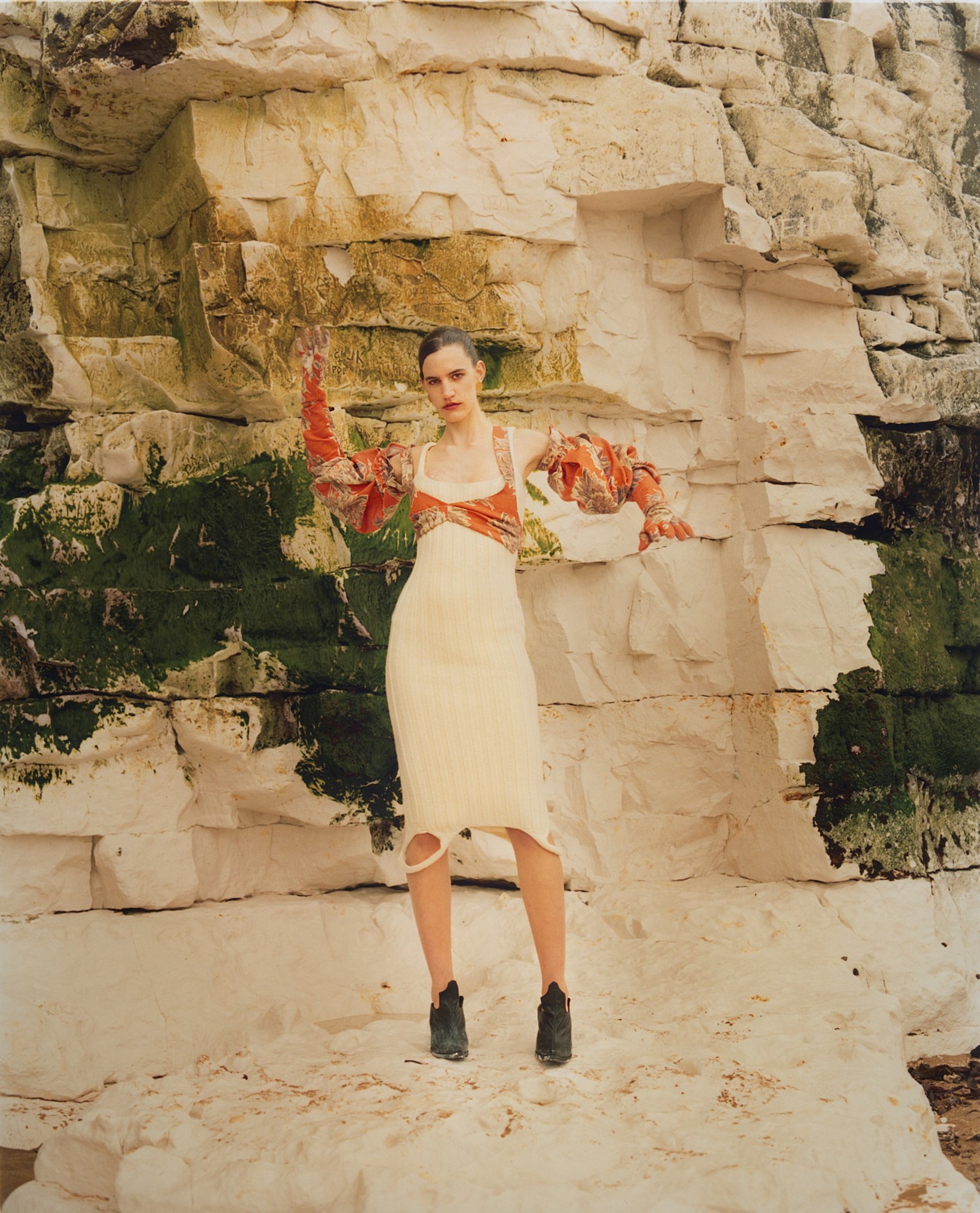
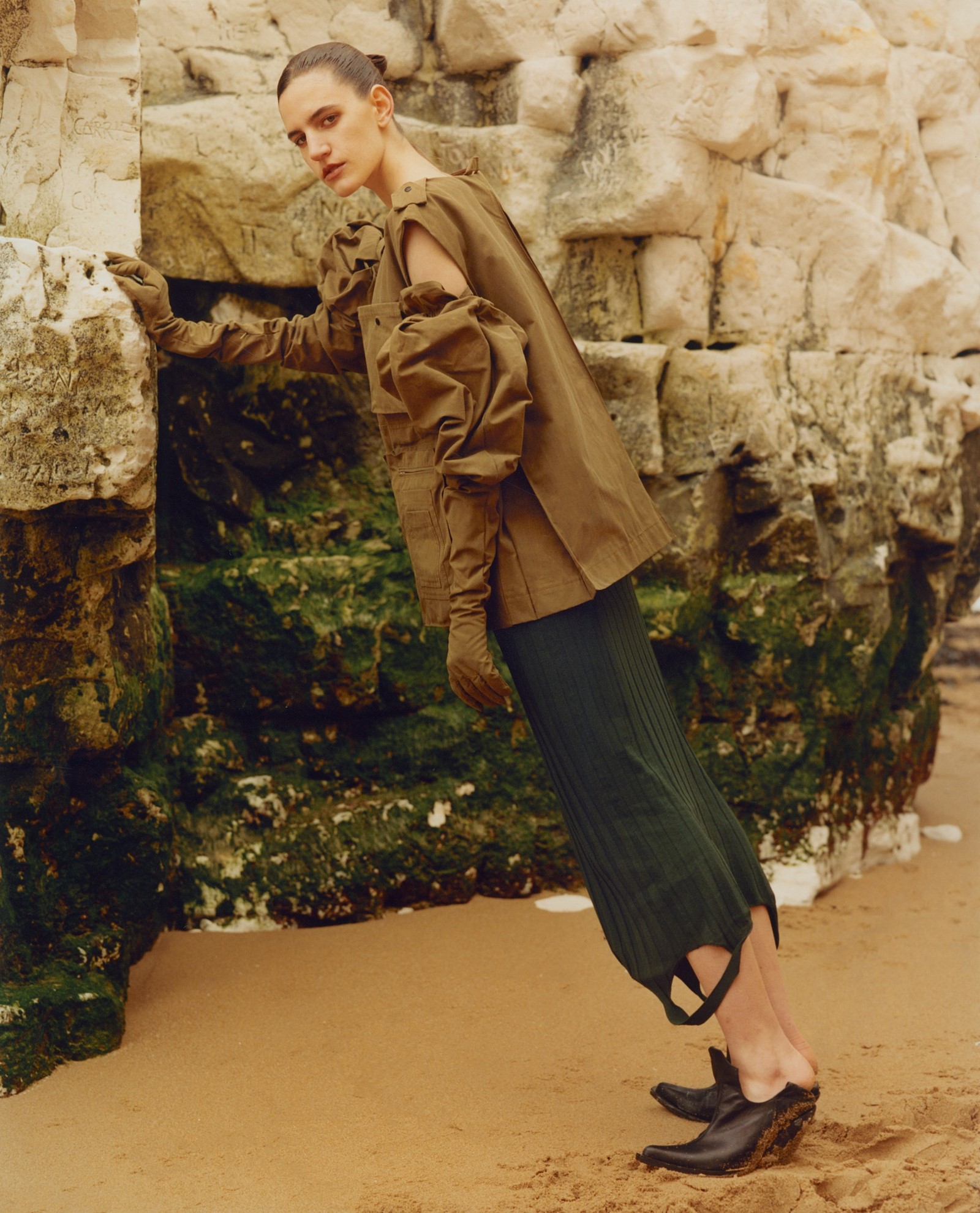
Entitled Orlando, Boehl Cronau’s A/W18 collection began with a singular garment: the suit his mother wore for her wedding in 1994. Described emphatically by the designer as “mega, mega nice,” he says it is an item of clothing he has carried in his mind since he began studying design. It was only this season, though, that it appeared, if obliquely, in one of his collections. “It all started with the idea of having a dissection through a woman’s wardrobe – of a lifetime – this idea that the objects or garments there are a continuation of the life we live.”
The other garment was a 1980s puff-sleeved jacket with a sweetheart neckline, owned by a friend originally from Australia. “She was like ‘I’m never going to wear this’, but she kept it anyway,” Boehl Cronau says. “It was this precious object she just couldn’t get rid of.” From there, he also found a number of puff-sleeved garments in his own mother’s wardrobe from the 1980s, the various references becoming the opera gloves shown in the final collection (“when I was done with it only the sleeves were left,” he says). Then, a printed nightgown from the 1930s, owned by his grandmother, was woven in. “Each of these pieces had really emotional, sometimes nostalgic meanings to the person,” he explains. “They are these items we live through.” Boehl Cronau is fascinated by the way clothes can hold meaning long after they stop being worn. “Like the kimono,” he explains. “It’s an object in its own right, appreciated simply by hanging on the wall. But it is also an object of adornment – it’s clothing.”
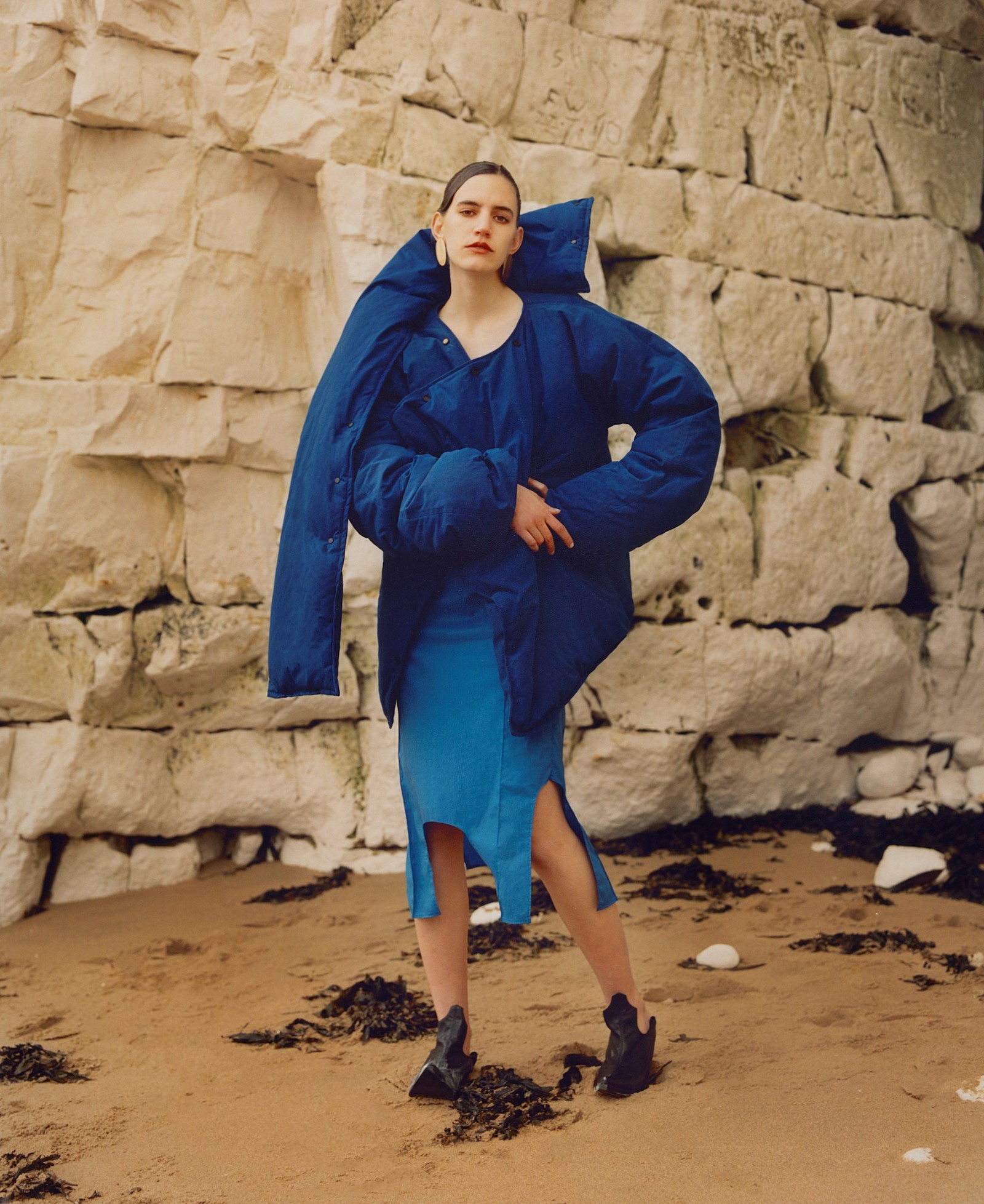

When these disparate references were pulled together, something clicked. “I became really excited about the process of creation again,” Boehl Cronau says of the A/W18 collection, here photographed by Lee Whittaker in Botany Bay, on Britain’s south coast (“It was about these stylised pieces in a more natural, more raw environment,” the designer says). The process itself is as important to Boehl Cronau as the finished garment – part of the reason he chooses to show under ioannes, rather than his own name. Boehl Cronau comes from a heritage of carpenters, and he likens his own enviroment to a workshop or an architectural practice. “I like this idea of, ‘oh, in my practice, we follow these kind of understandings’,” he says. “In fashion it can be self-celebratory. But I kind of like the idea of creating an abstract framework, of following this really rigid agenda.” In these terms, he sees himself as having a job, as a creative director – though in this case, that job happens to be at the helm of his own brand.
If this sounds fastidious, such a framework has allowed him to create a space for collaboration, inviting his close friends, many of whom are women who work in the creative industries themselves – into his world. “The fun part is that I’m not too precious. When we work in the studio there is a lot of discussion about how pieces can be worn, and there’s always one or two ways,” Boehl Cronau says. “With my clothes I hope there is an aspect of nonchalance. That there is an aspect of fun. And that there is also this aspect of not giving a fuck. Ultimately I hope whoever decides to wear them is easy, empowered, and a little bit careless in them. I think that would be my ultimate joy.”
